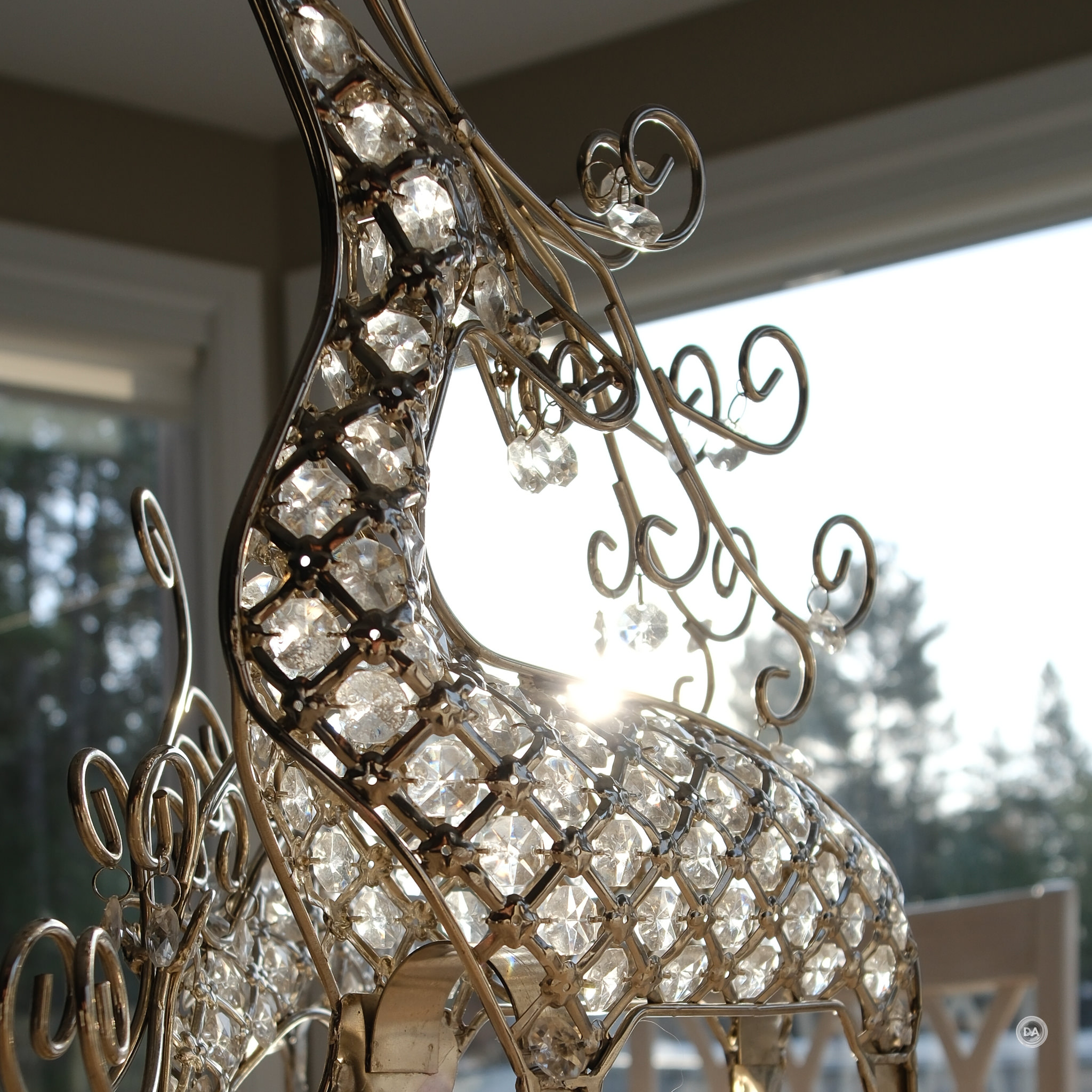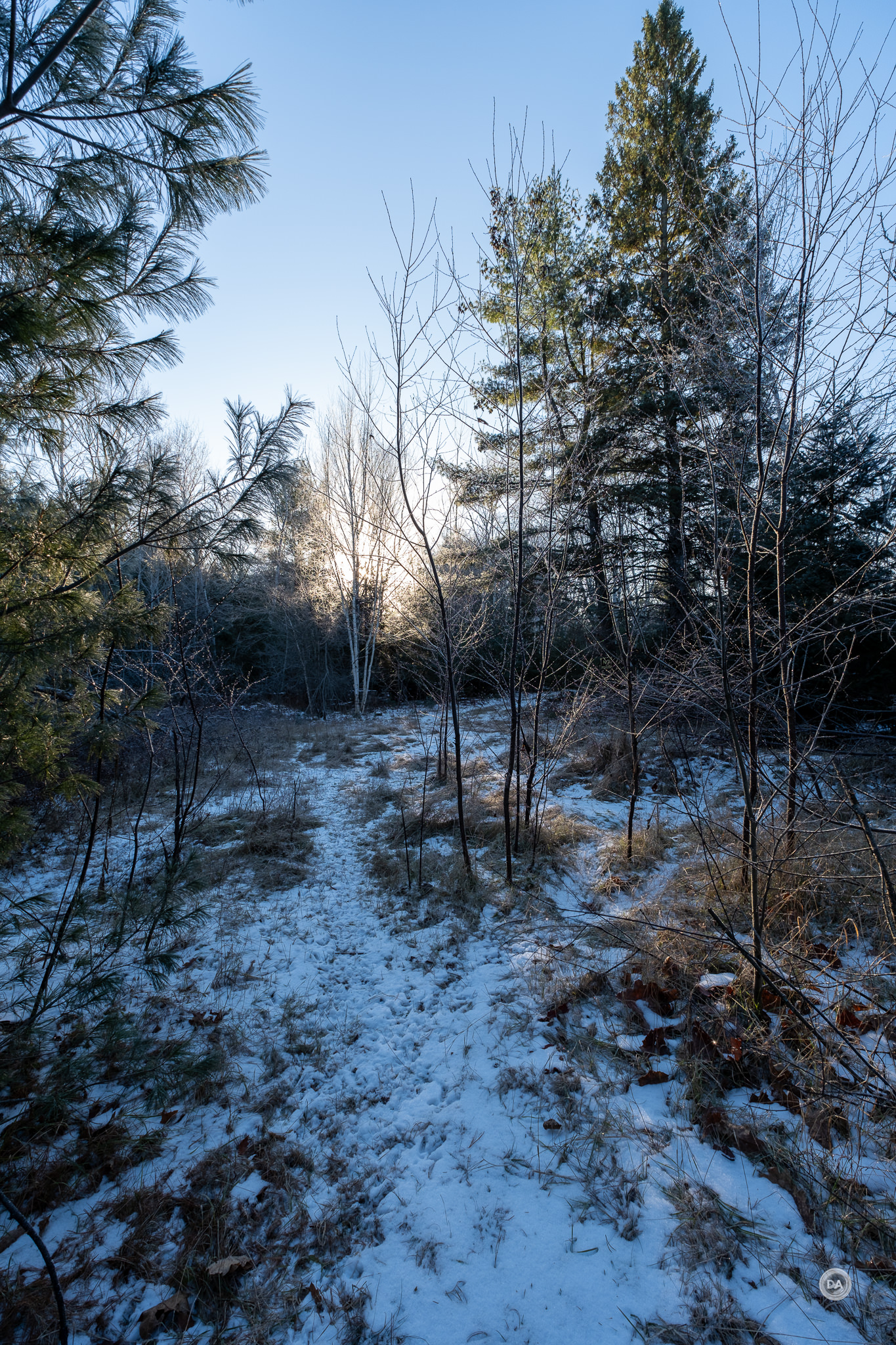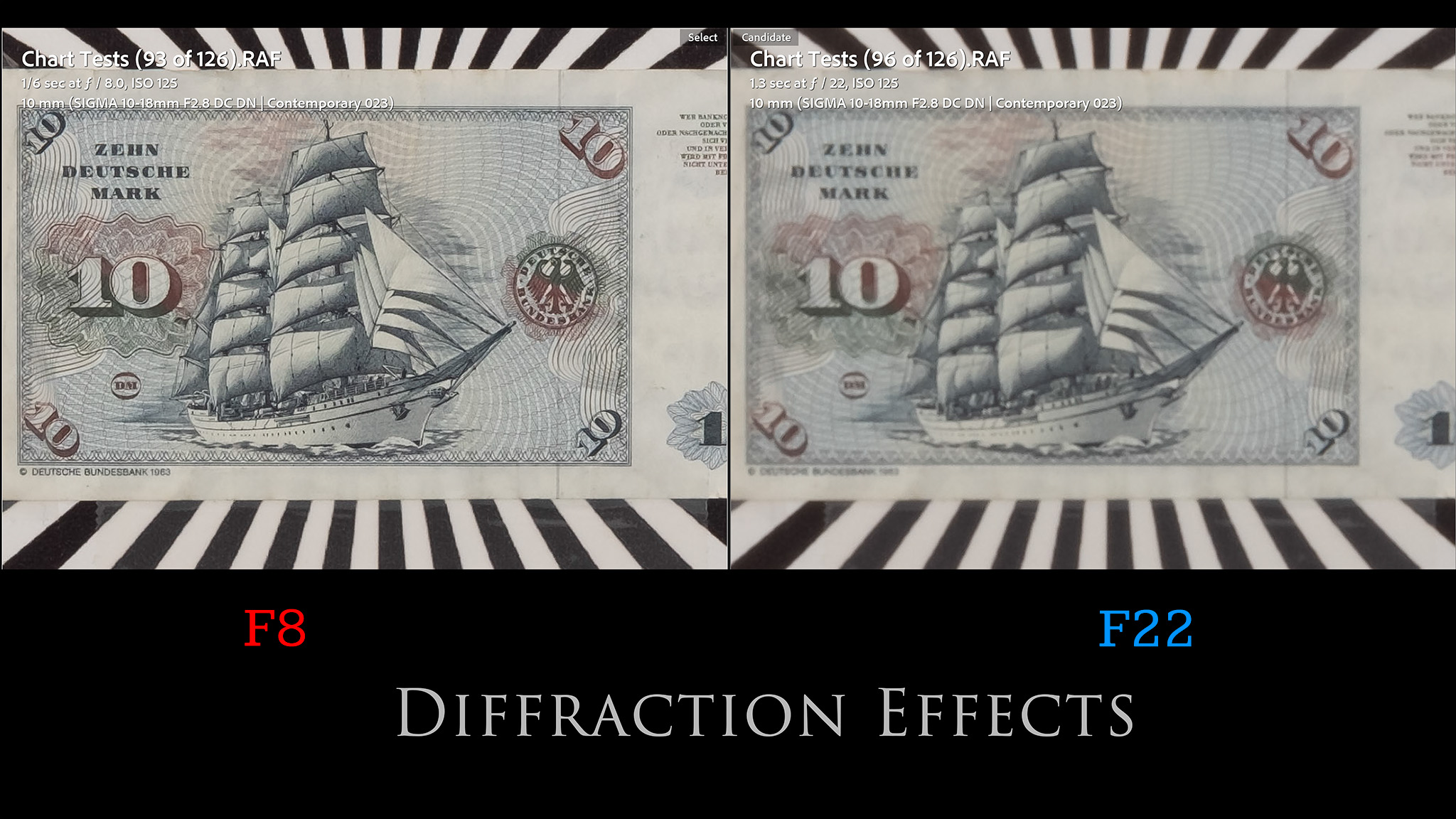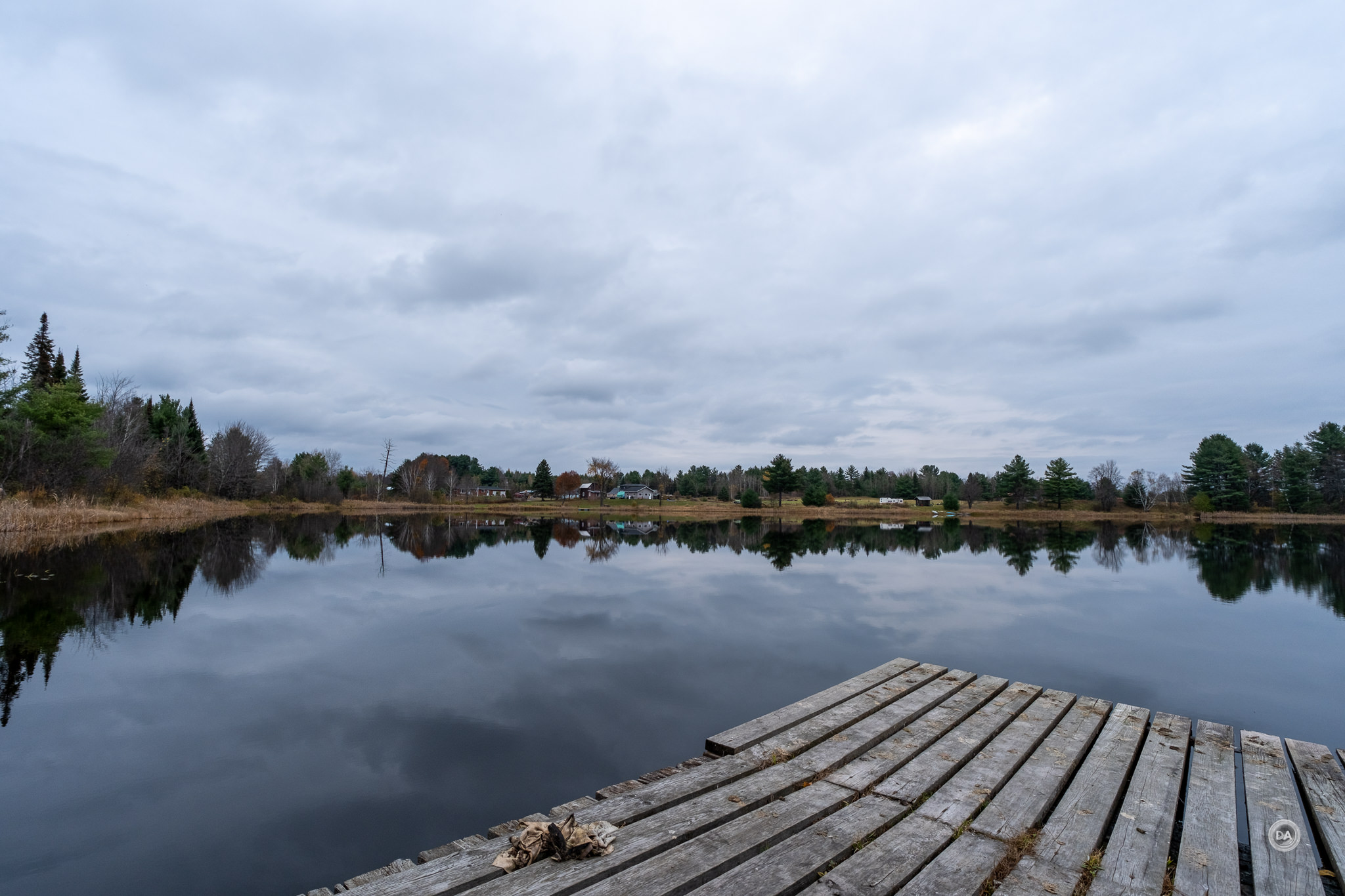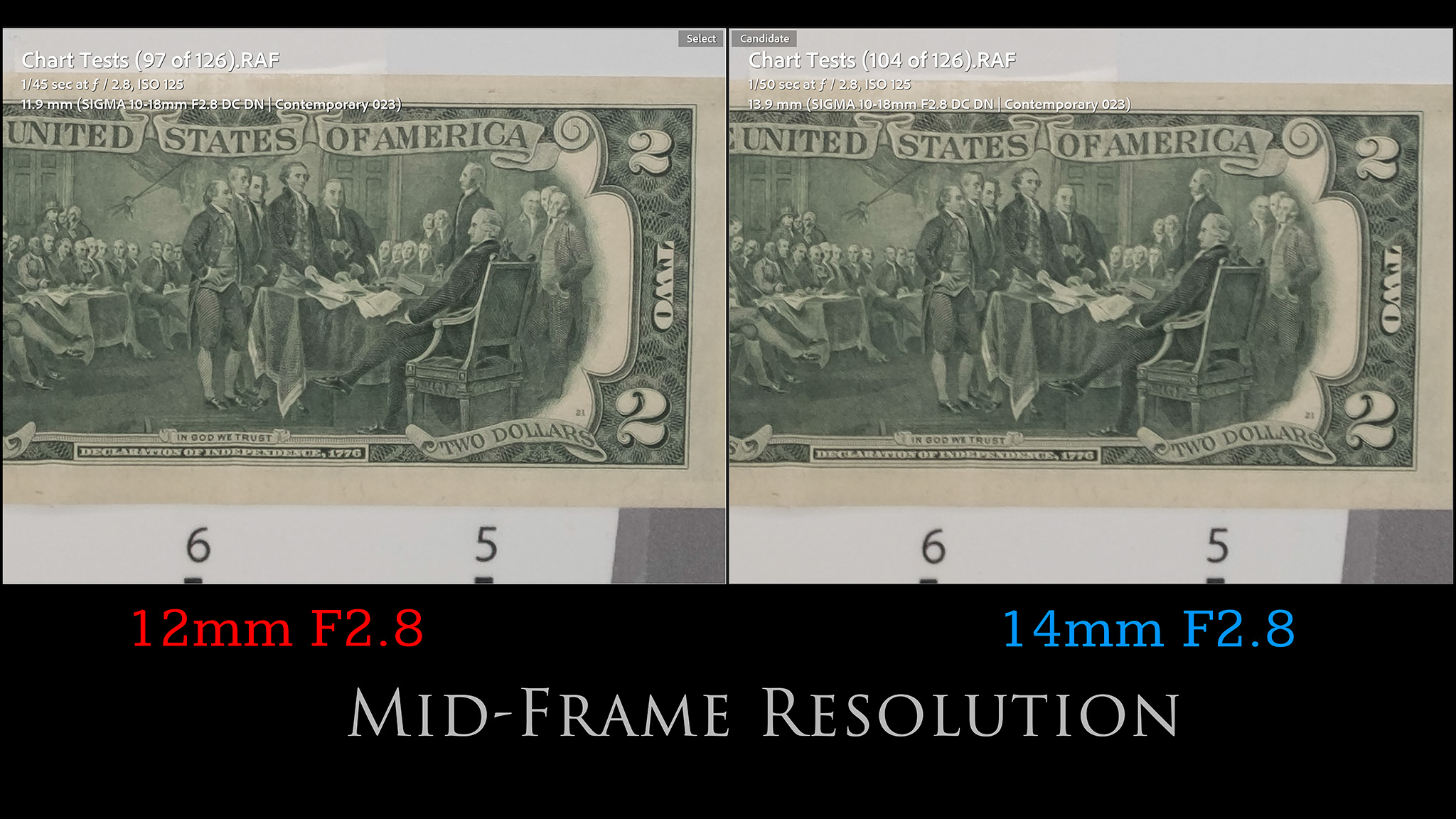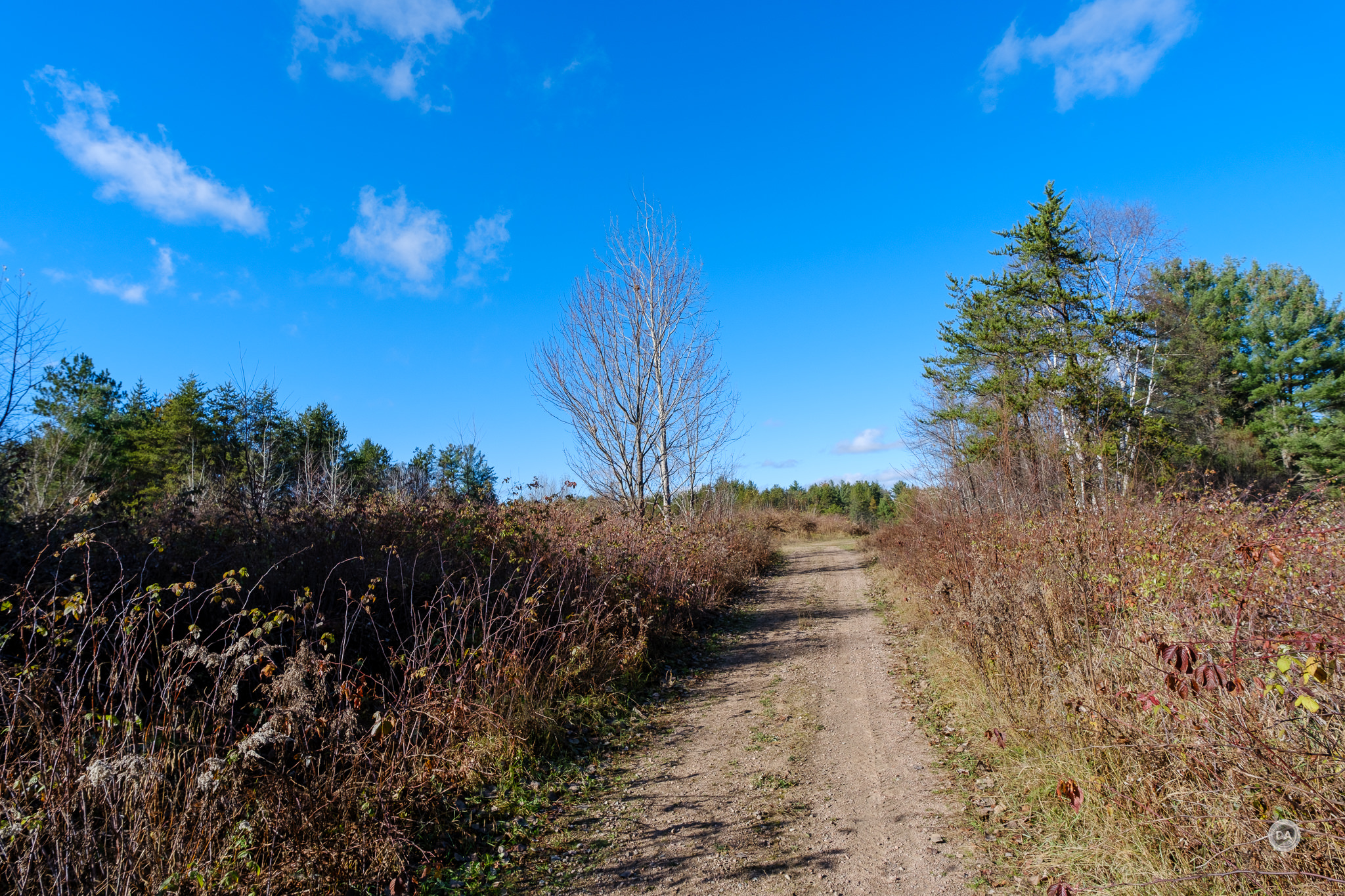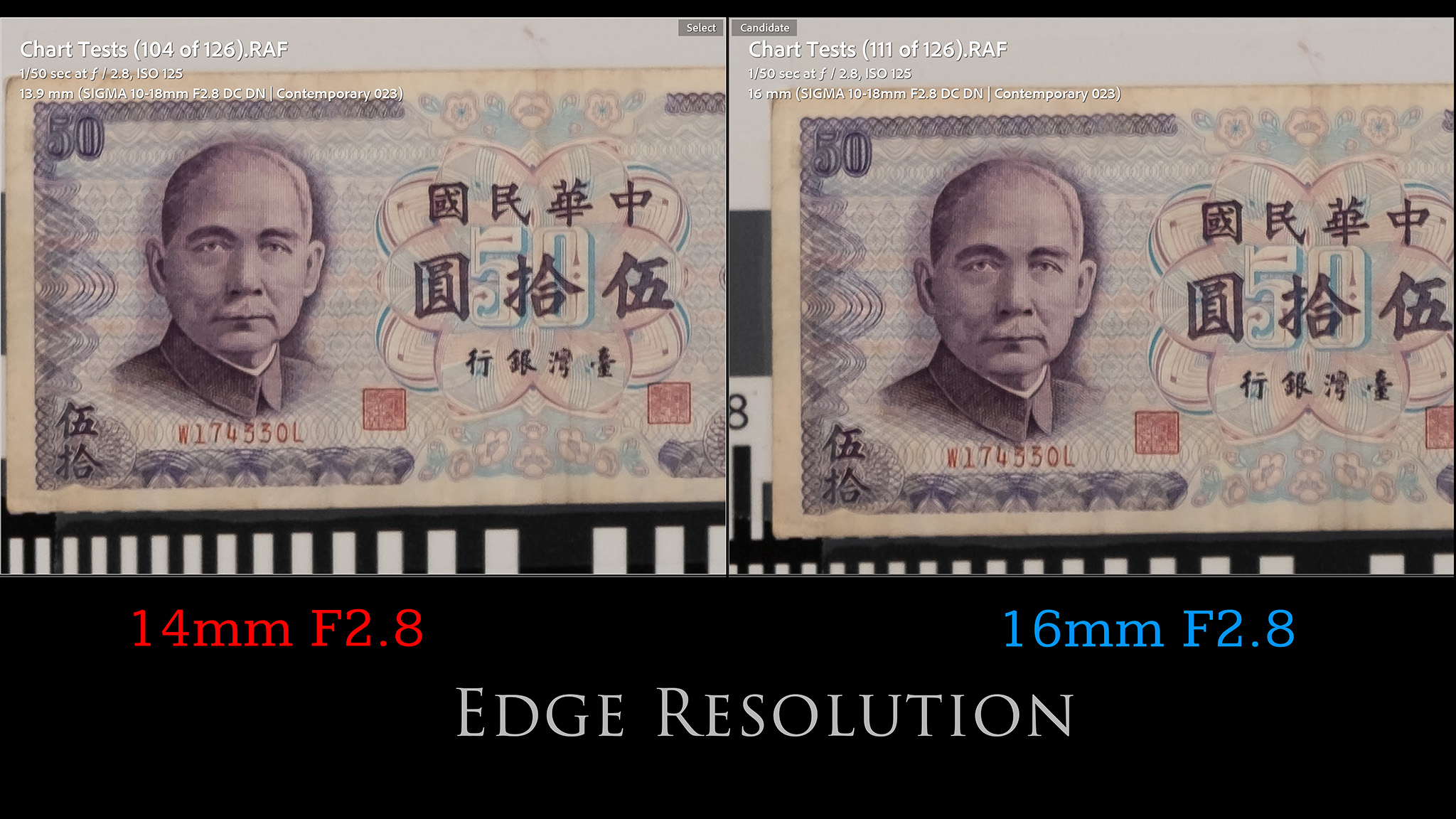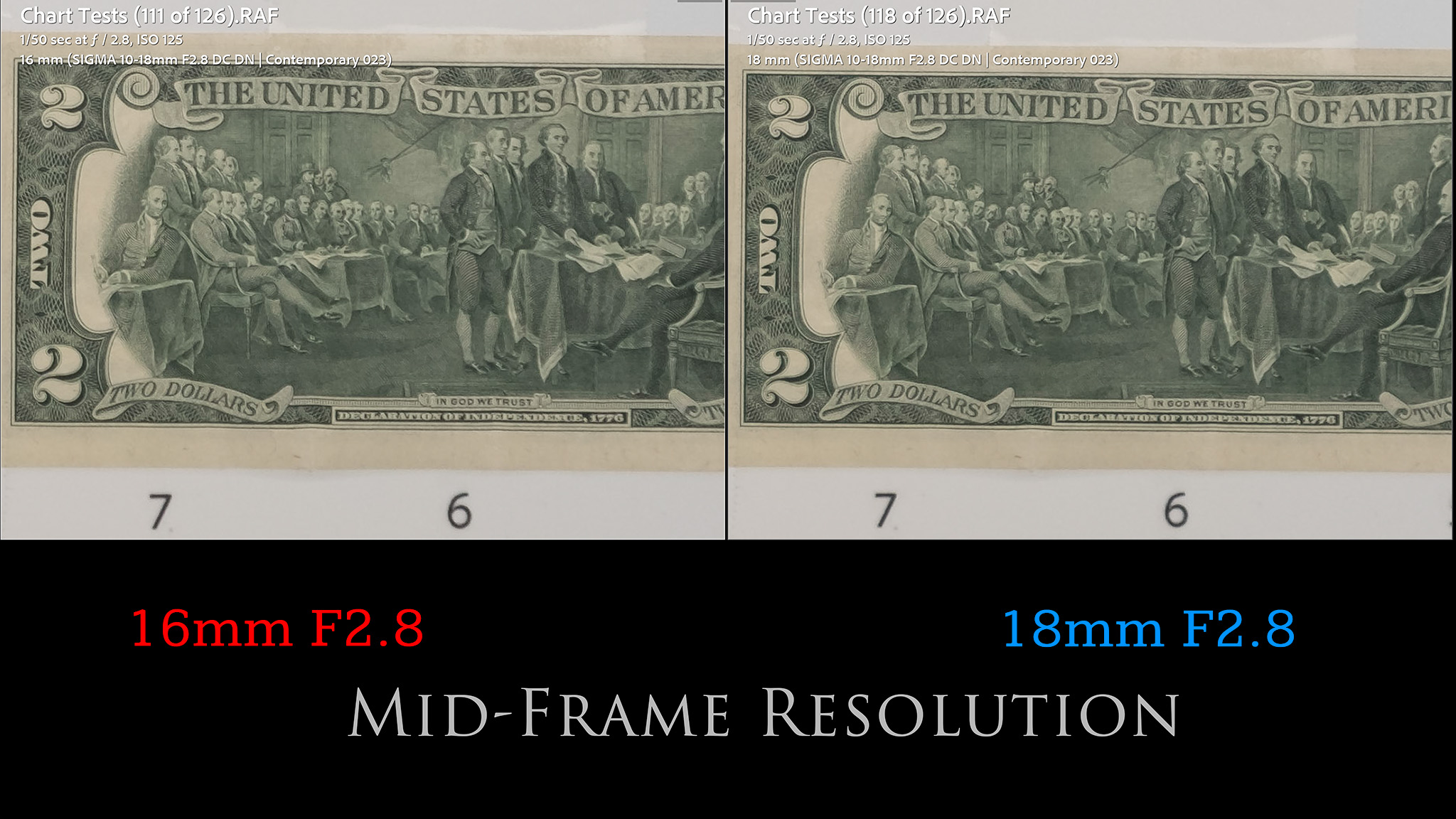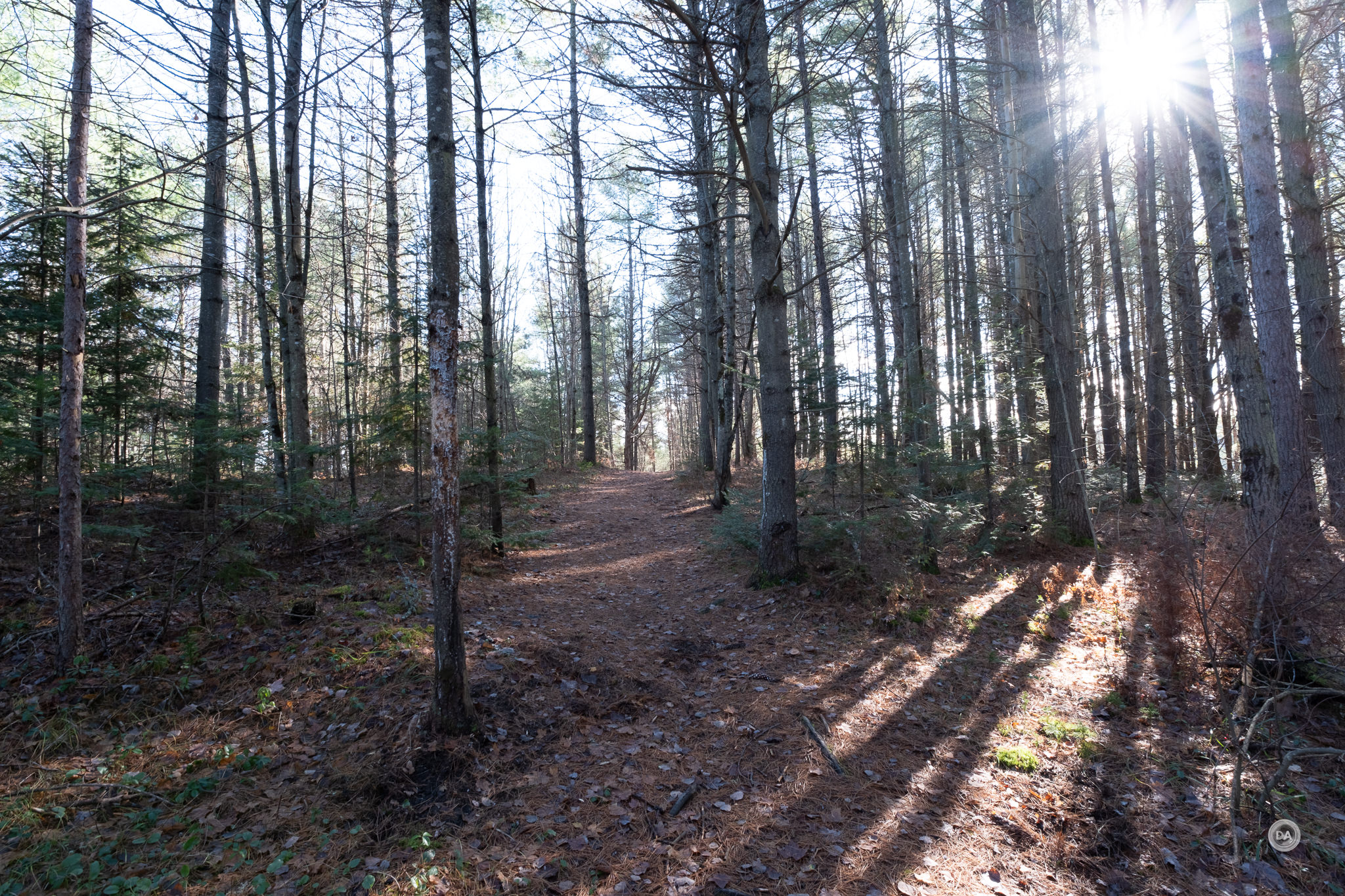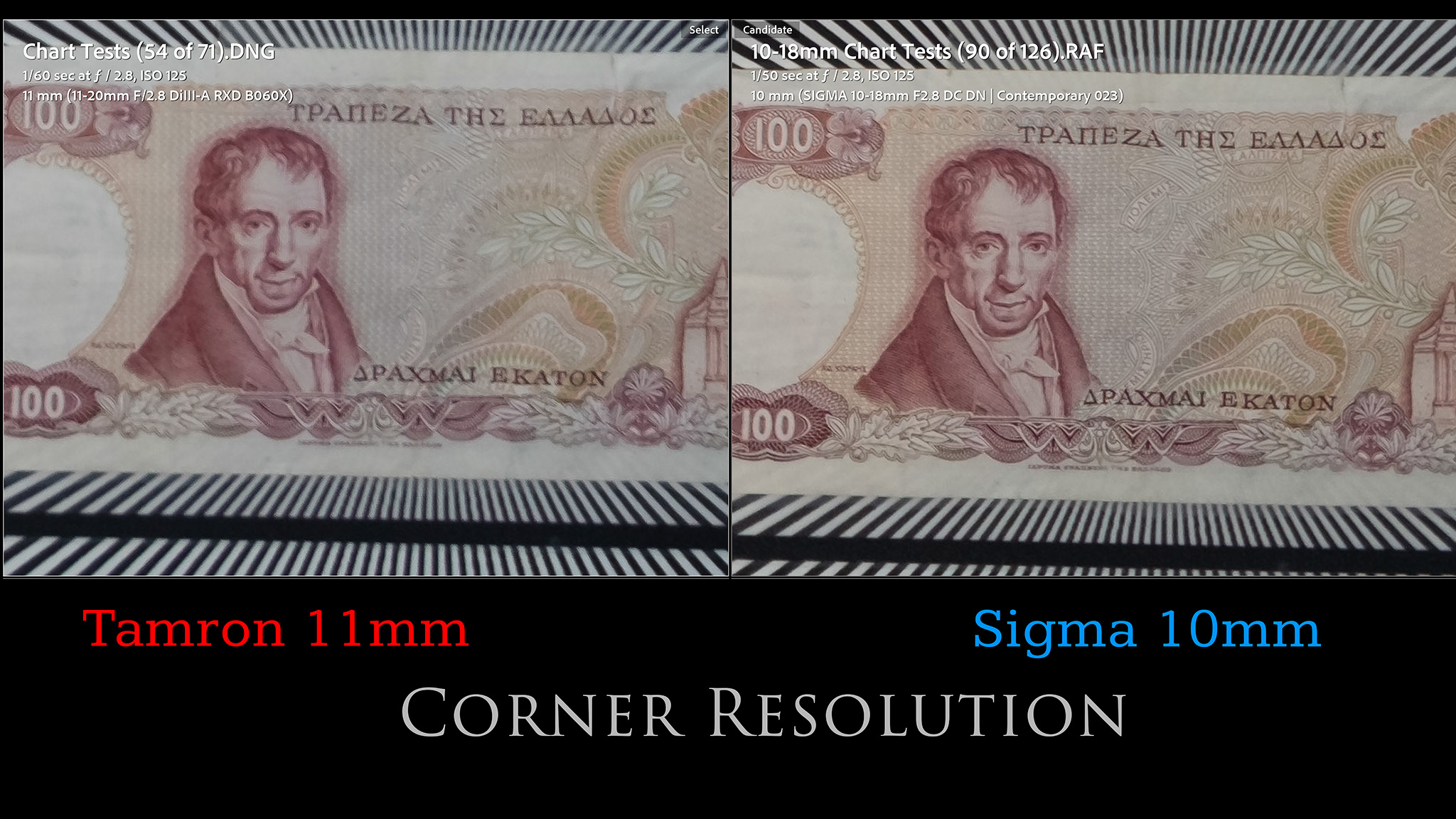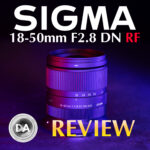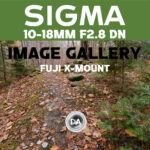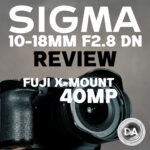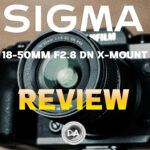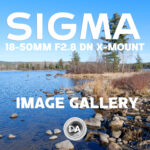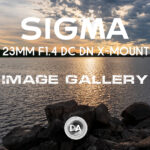
The Sigma 10-18mm F2.8 DC DN is the second of two Sigma zooms that we’ve seen rereleased on Canon’s RF mount, and they are very welcome. Earlier this year as I was doing my review of the Canon EOS R50 compact APS-C mirrorless camera I couldn’t help lament the state of the lens options for Canon’s RF-S mount. At the time of the review (two years since the release of the EOS R7, the first of Canon’s RF mount APS-C cameras), this was the sum total of the available lenses.

Yuck. I couldn’t imagine a less exciting lineup of lenses. The fastest maximum aperture in the bunch was F3.5, and that lens is F4 and smaller before you make it to 30mm. Canon clearly knew they had a problem, for between the time that I filmed my review and the time I released it, they announced that certain Sigma (and later Tamron) lenses would become available for RF-S (the APS-C version of Canon RF). Now, to be clear, this is only for APS-C lenses, but for now it seems like Canon is going to let third parties solve their APS-C lens problem. This is great news for consumers, however, because it means that Sigma’s lineup of DC DN lenses will be coming to Canon RF. The first release was the Sigma 18-50mm F2.8, a lens that I actually own and gave a positive RF mount review here. A few months later they have followed up with the second zoom release, this time the wide angle Sigma 10-18mm F2.8 DC DN. Is this also a lens worth considering for your Canon R-mount APS-C camera? You can find out my thoughts in the video review below…or read on.
Follow Me @ YouTube | Patreon | Instagram | Facebook | DA Merchandise | Flickr | 500px | X
__________________________________________________________________________________________________
Thanks to Gentec (Sigma’s Canadian Distributor), for sending me a review loaner of this lens. As always, this is a completely independent review. All opinions and conclusions are my own. *The tests and most of the photos that I share as a part of my review cycle have been done with the 45MP Canon EOS R5, which I reviewed here.
__________________________________________________________________________________________________
This becomes the first “fast” wide angle zoom for Canon RF-S (APS-C), giving a constant aperture of F2.8 over its zoom range. Now, to be fair, that’s not a big zoom range, but then again, Canon’s own RF-S 10-18mm not only has that same small zoom range but also has a variable aperture of F4.5-6.3! That means that the Sigma is over two stops faster at 18mm (F6.3 is 2 1/3rds stop slower than F2.8). And, while that zoom range is not large, it is enough to give you a variety of options for framing a scene, from this at 10mm:

…to this at 18mm:

This review of the 10-18mm RF is not a whole new review, but rather an update on how the 18-50mm RF translates to Canon RF. I’ve already tested the image quality at both a 26MP (Sony) and 40MP (Fuji) in 2023, so that covers the full gambit (and more) of what’s available on RF bodies. There are no optical surprises here, but I’m always curious to see how the lens changes in terms of its dimensions, but, most importantly, how well it autofocuses on a platform that it wasn’t originally designed for.
The 18-50mm RF is one of six lenses released by Sigma for Canon RF, and those six lenses represent all of the APS-C mirrorless lenses they’ve released over the past three years. You can see my review of the original releases on Sony here.
- Sigma 16mm F1.4
- Sigma 23mm F1.4
- Sigma 30mm F1.4
- Sigma 56mm F1.4
- Sigma 10-18mm F2.8
- Sigma 18-50mm F2.8
Sigma’s DC DN lenses have all fallen under the umbrella of their Contemporary lineup, and while Sigma has proven willing to experiment with new features and design elements within the ART and Sport lineups, the Contemporary lenses have all stuck to a fairly rigid design formula. That continues to be the case here, so this little zoom mostly looks and handles pretty similarly to other lenses in the lineup.

There’s nothing new here on the RF mount, but the lens is more of a standout on Canon due to having essentially zero quality competition. The 10-18mm RF is a genuine treat as an addition here. Why? Here’s a few reasons:
- Has at least a weather sealing gasket
- Better build quality than RF-S lenses
- Includes a lens hood
- Constant F2.8 aperture
- Good up close performance
- Great autofocus on RF
In essence, the poor competition makes this lens a star, though frankly I still found it one of the more compelling options on these other platforms as well.
The crop factor on Canon is different than Sony or Fuji, so the zoom range works a little different. Fuji/Sony have a crop factor of 1.5x, which means that the lens goes from a full frame equivalent of 15-27mm. Canon’s APS-C crop is 1.6x, and so that changes the effective focal range to 16-29mm. You’ll miss the extra bit of width at 10mm but get a little more reach. In this case, I think that most of us would prefer the extra millimeter of wide angle coverage, but that’s just not going to happen.
Marked positions in the zoom range are 10, 12, 14, 16, and 18mm, and here’s what the same scene looks like at each of these marked positions.





Clearly this is a little lens that can make beautiful images, but is it worth twice as much as Canon’s own 10-18mm F4.5-6.3 IS STM lens?
Sigma 10-18mm RF-Mount Build and Handling
There’s really only one significant change to the 18-50mm on Canon, and that is that the lens mount portion of the lens has to be flared out to accommodate the much larger diameter of the RF mount.

Unlike the 18-50mm, however, this isn’t the widest part of the lens, so the exterior measurements don’t change despite this change. It is 72.2mm in diameter and 62mm in length (2.8 x 2.4″). That’s actually 2mm shorter than the Sony version, and this obvious reflects a slightly different flange difference between the two mounts. That extra bit of girth near the lens mount also adds a tiny bit of weight, with the RF version weighing 260g (9.17 oz). Other than these minor physical changes to the RF version, the build is otherwise identical to either the E-mount of X-mount versions.

This weighs about 110g more than the Canon, though the Canon is a very plasticky lens that also has a very slow aperture. The build quality between these two lenses can’t really be compared.
The 10-18mm RF is a mixture of metals and “thermal composites” (high grade engineered plastics) in construction, and the construction feels quality in the hand. It is built around a metal mount, unlike the Canon lens, which has a plastic mount.

The overall build quality just feels much higher than any of the Canon RF-S lenses that I’ve tested so far. This feels like a quality lens.
Up front we have the ability to use traditional filters in a very standard 67mm size.

There is a weather sealing gasket at the lens mount (thicker here on the RF mount than on previous versions), but, like other Contemporary lenses, there are no internal seal points.
The only thing on the barrel is the focus and zoom rings. The closest to the lens mount is is the focus ring, which is fairly narrow (10mm), ribbed, and moves smoothly. Like other lenses designed for mirrorless cameras, this is a focus-by-wire system in which input from the focus ring is routed through the focus motor. It is actually the focus motor that moves the elements, making manual focus more of an emulation than a direct movement of the elements. Some lenses pull this off better than others, and the Sigma 10-18mm DN is one of them. There is good weight/damping on the focus ring, and no visible steps during focus changes. I didn’t notice any focus lag either; the action on the ring and the movement of focus seemed directly linked. I will note that the lens will automatically alert the body to magnify the image when you are manually focusing, which is a big help in visually confirming focus. The focus weight is a little lighter than what I like, but not bad.

There is about 10mm between the focus ring and the beginning of the flared section that leads to the zoom ring. I appreciate some space there, as that was one of my complaints about the Sony 10-20mm; there was almost no room between the two rings on that lens, and it was easy to inadvertently move the wrong ring. There’s a very definite difference between two rings and position on the Sigma, though there is a different problem. At the fully retracted position (there is a slight external zoom action), the lens hood fits so tightly against the zoom ring that there isn’t a lot of space for your thumb to fit on the narrow ring. If you happen to have longer fingernails, you might actually find zooming a bit of a challenge.

The zoom action itself is very smooth. This is a “reverse zoom” in terms of the retraction; the inner barrel is fully retracted at 18mm and extends the furthest at 10mm, though the barrel extension is only about 10mm.

Sigma is experimenting with a new lens hood design for this lens. Rather than bayoneting into place, it is actually just a push on design. You still need to line up the markings on the hood and the barrel, but then you just push the lens hood into place rather than rotate it. A spring/lever mechanism holds the hood locked into place. You can release it by just doing a slight rotation to the left.

The primary “pro” of this design is it allows them to the make the lens hood a little thinner as there doesn’t need to be room in the hood design for the bayonet action. Sigma touts the fact that while the filter size of the 10-18mm is 12mm larger than the 18-50mm (67 vs 55mm), the diameter of the lens hood is only 3.8mm larger.
If you want to reverse the hood for storage, you now line up an arrow on the lens hood with the previous mark on the lens barrel and push it forward. Removing it simply requires a similar slight rotation to the left. As per usual, Sigma’s lens hoods are just a little bit nicer than the competition, including some soft-touch materials, texture variations, and lens information imprinted on them.

The 10-80mm DN has two different minimum focusing distances for the wide and telephoto ends of the zoom range. At 10mm you can focus as closely as 11.6cm (4.6″) and can get as high as a 0.25x magnification…though you have to be pretty much right on top of your subject to get it.
At 18mm that disance extends to 19.1cm (4.6″) and the magnification drops to just 0.14x…though shots at 18mm are a whole lot easier to get!

Get close enough and you can produce some creative shots like this.

The aperture iris is electromagnetic and controlled from within the camera (no aperture ring). It has seven rounded aperture blades that do a fairly good job of retaining a circular shape even with the lens stopped down, though frankly you won’t have a lot of opportunity to shoot shallow depth of field shots with a wide angle lens like this.
Stopping down will produce a decent (but not exceptional) 14 bladed sunstar effect.

There is no optical stabilization on the lens, unfortunately, which is the one advantage I can point to for the Canon RF-S 10-18mm. I happened to test on a camera that had in body image stabilization, so I didn’t miss it, but many of Canon’s smaller APS-C cameras don’t have IBIS.
On other platforms the Sigma is a rather plain lens in terms of features and build. Because of so little competition on Canon, however, it feels next level in terms of build and handling. It’s a nicely made little lens that follows a familiar, well-executed Sigma formula.
Autofocus and Video
Sigma continues to utilize a stepping focus motor (STM) in these smaller lenses as the elements are smaller and lighter than lenses and don’t require the higher torque that some of their large aperture full frame or sports oriented lenses. Autofocus is something that Canon does very, very well, and it is clear to me that Sigma has received access to the focus protocols and algorithms, as the 10-18mm RF definitely handles like a first party lens.
The STM motor provides fast, quiet, and accurate autofocus. Eye detection works fine, and I was able to grab some action photos without difficulty.



AF had no problem with a group photo of some friends and I on the golf course, though, to be fair, it isn’t difficult to have a LOT in focus with a wide angle lens like this.

Autofocus speed was excellent, near instantaneous both indoors and outdoors, and utterly reliable and accurate. My focus tests showed extremely rapid transitions from close to distant subjects. Focus breathing is extremely low, so this helps the transitions feel very smooth and rapid.
This is also a huge factor in video recording, as focus pulls are not only quick and confident, but the extremely low focus breathing helps them to feel very seamless and cinematic. No steps, no pulses, but just clean, smooth transitions that are nicely cinematic.
My “hand test” (where I block the view of my face with my hand and then move the hand to allow focus to pop back to the eye) also went well. Focus transitioned confidently from my hand to my test and vice versa.

The lens is not parfocal, however, and I did notice that there were moments of defocus before the lens refocused while zooming and do video recording. I also noticed a bit of warping as I began to move the from the wide end towards the telephoto end.
But overall this is a really solid autofocus system that delivers a fantastic performance on Canon.
Sigma 10-18mm RF Optical Performance
The Sigma 10-18mm RF sports a relatively complex optical formula for such a small lens. There are 13 elements in 10 groups, and that includes number of exotic elements like 4 aspherical elements (including a large GM aspherical concave lens as the front element), 3 FLD elements, and one SLD element. The MTF chart and comparison shows a significant improvement over the older Sigma 10-20mm F3.5 that the was equivalent lens for DSLRs. The MTF chart shows a very strong center and midframe at both ends of the zoom range with minimal falloff in the corners at 10mm. There’s a stronger falloff at 18mm in the corners.


In this section I will be reusing some of my results from the 40MP Fuji X-Trans sensor. It is higher resolution than anything Canon currently makes (current resolution points are between 24 – 33MP. Fuji’s images are also harder to sharpen than Canon, so you will have no problem getting beautiful results on Canon bodies. You can expect sharpness results to look better on Canon. I don’t currently own a Canon RF APS-C camera, so I’m doing this test on my the APS-C mode of my EOS R5, which is only 17MP. That’s fine for showing real world images as I’ve done in this review, but not really for evaluating the limits of the performance.
It has no problem producing beautiful images.

For those that are interested, Canon is not going to allow you to even experiment with this lens for full frame. Only the 1.6x crop option is available; all other options are greyed out.

I will redo the vignette and distortion tests, however, as the vignette amount does change from one mount to another. Here’s a look at the before and after of manual corrections of both at 10mm:

I didn’t expect to see any real difference in distortion (it’s the same optical formula), but I’ve noticed a trend with lenses first developed for Sony that then move other mounts that the vignette tends to be heavier.
At 10mm there is a significant amount of barrel distortion. I settled on a +23 to correct it, though there is definitely some “mustache” shape to the distortion pattern where correcting the barrel distortion across the majority of the frame tends to create some pincushion distortion in the corners. The standard profile does a cleaner job of correcting the distortion. On Sony I needed a +53 to correct the vignette, but on Fuji and on Canon I had to max out the slider (+100). That’s close to two stops higher.
So how about the “telephoto” end of the zoom range?

The distortion flips to pincushion style at 18mm but it was very linear and easy to cleanly correct for (I used a -4 on Canon). Vignette was a little lighter but still required a +74 to correct (+36 more than on Sony). Sigma gets profile support on Canon in camera for everything but distortion for some reason. There is already a correction profile available for Lightroom/ACR that will also clean things up nicely for RAW files. So, not a flawless performance, but nothing critical here, either.
How about chromatic aberrations?
I saw very little longitudinal chromatic aberrations before and after the plane of focus. You can see very little fringing in all of the shiny metal and crystal bits on this decorative reindeer.
Lateral Chromatic Aberrations usually show up along the edges of the frame as fringing on either side of high contrast areas, but that doesn’t seem to be an issue here. Winter is the most obvious time to see issues with LaCA due to all the bare branches, but I don’t see any issues here even with corrections turned off.


That’s good news, as you are far more likely to see lateral CA on a wide angle zoom in real world images than you are to see longitudinal CA.
So how about resolution and contrast? All chart tests done with a the X-H2 (40MP) using a tripod and a two second delay. Here’s a look at my test chart:
And here are the crops (at roughly 200% magnification) from the center, mid-frame, and extreme corner shot at 10mm and at F2.8:



In the center of the frame we can see that the Sigma 10-18X has no problem. It still looks fantastic. Mid-frame is a little murkier, though the corner look relatively good. Stop down to F4 and the mid-frame and the corners take a nice leap forwards:
There’s a bit more on tap at F5.6, so that means that real world landscape images at 10mm will look very nice all across the frame.
Diffraction comes early on pixel dense cameras like the X-H2, so I actually found F8 to have very slightly less contrast compared with F5.6. After F8 things go downhill fast as diffraction robs away contrast and acuity. By F22 (minimum aperture) the image looks very soft.
I would recommend sticking with F5.8-F8 for landscape work on a high resolution camera to get your best results.
I slightly preferred the overall image quality at 12mm. The center is about the same as 10mm, but the results in the midframe and corners are clearly better.
Real world 12mm images look great, though the absolute edges aren’t pin sharp on 40MP.
14mm is very similar to 12mm in contrast, though I didn’t feel like it resolved some of the fine lines quite as well. Take a look at the number 2 and the area around it on the right as compared to the left (12mm).
There’s a clear improvement at F4, however, and landscape apertures look pretty great in real world images.
16mm is mostly similar to 14mm with perhaps a little better detail and contrast…particularly along the edges of the frame.
I did note a mild regression at 18mm in my Sony E-mount review, but I’m seeing it less here on Fuji. As I compare 16mm and 18mm across the frame I see some give and take. Some areas favor 16mm, others favor 18mm. The performance is mostly similar between the two focal lengths, making the overall sharpness and contrast very consistent across this zoom range.
I chose this crop because it illustrates the challenge well – there is very little to distinguish between the two focal lengths…even side by side and magnified to 200%!
As before, you can see some improved contrast a bit more detail by stopping the lens down. I found a more significant different at F5.6 than at F4. By F5.6 the improved contrast is very noticeable.
The two ends of the zoom range are the most important, as you’ll often be in situations where you want to go as wide as possible, while the 18mm end will give both the maximum reach but also will be the go to for up close work…like in the shot of these mushrooms.


You can see from the crop that while the amount of detail at F2.8 on a high resolution sensor isn’t pin-sharp, it is sharp enough to work in most situations.
You are also most likely to get visible bokeh at 18mm. This image allows us to look at both the sharpness of the subject and the bokeh beyond.
At a pixel level I can see that contrast doesn’t “wow” me, but at every other viewing magnification the image looks great. There’s no “bleeding” around the edges of the leaves due to low contrast, and the quality of the bokeh is pretty nice. Wide angle lenses are almost never going to give you amazing bokeh (that’s just not their strength), but I would be happy in getting images like the one above.
Here’s another bokeh shot of a field of frost covered sweet fern. You can see a bit of busyness in the transition zone as things move out of focus (some outlining), but beyond that the bokeh gets fairly soft and creamy.
Flare resistance was fairly good in most situations, with good contrast and only minor issues with ghosting. That performance was pretty similar to what I saw on Sony. Here’s a fresh shot that shows good flare resistance.
I did see some “flashing” with the sun right out of the frame when shooting video, though I did find it fairly artistic and not distracting. Again, that’s a subjective evaluation, and I would recommend watching the video review to draw more conclusions for yourself. Here’s a few screenshots to show the effect.
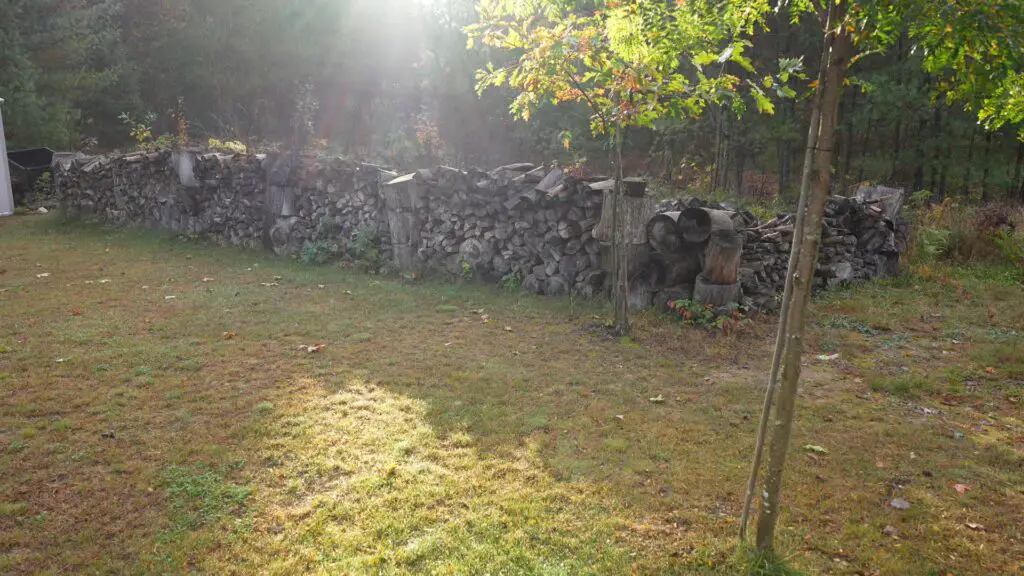


Overall my feelings were very positive about the flare resistance.
Canon has nice color science, and that means that it isn’t difficult to get images with beautiful color when using the 10-18mm RF on a Canon body.

Here’s another shot that shows nice, rich levels of color saturation.

The Sigma 10-18X is able to navigate the bump to 40MP on Fuji better than most zoom lenses I have tested on the sensor, and that means that Canon RF shooters at lower resolution levels (and easier sensors to sharpen) should be pretty satisfied with the amount of detail you can achieve with this lens.
That Fuji sensor is a monster for making lenses look softer at a pixel level, but that’s not on Sigma. Compared to other lenses, it actually holds up well. Here’s the Tamron 11-20mm F2.8 RXD (another lens that looked very good on Sony but softer on Fuji), and you can see that the Sigma definitely better.
All things considered, I feel like there is a lot of optical performance here for such a small package. You can see many more beautiful images by visiting the image gallery here.
Conclusion
I’ve been recommending the Sigma 10-18mm F2.8 DC DN to a lot of people looking for a good APS-C wide angle zoom on multiple platforms, so I’m not surprised that it performs well on Canon RF mount. Autofocus was fantastic, image quality looks great, and the lens remains very impressive despite its small size. It’s a great match for smaller APS-C bodies in size, and the performance is strong enough to delight owners.

There really isn’t much in terms of competition, so it’s an easy lens to recommend on RF. It is actually the premium option, and while it is isn’t cheap at $659 USD, neither is it ridiculously expensive.

It’s great to see Canon’s RF mount starting to open to these third party offerings, and very quickly we will see the amount of lenses available for RF-S (APS-C) tripled due to Canon’s move to open the protocols. This gives Canon shooters a seriously good little option, and the Sigma 10-18mm 2.8 DN is what I would be buying if I were in the market right now.

Pros:
- Fantastic job porting to Canon
- Extremely compact and lightweight
- Nicely made with a weather sealing gasket
- Useful focal range with constant F2.8 aperture
- Great autofocus performance
- Good video AF performance
- Almost non-existent focus breathing
- Good sharpness across zoom range
- Nice colors
- Good flare resistance
- Nicer build and handling than RF lenses
Cons:
- No optical stabilizer
- Fairly strong and complex barrel distortion at 10mm
- Twice as expensive as Canon’s own offering
__________________________________________________________________________
GEAR USED:
Purchase the Sigma 10-18mm RF @ B&H Photo | Adorama | Amazon | Camera Canada | Amazon Canada | Amazon UK | Amazon Germany
Purchase the Sigma 18-50mm RF @ B&H Photo | Adorama | Amazon | Camera Canada | Amazon Canada | Amazon UK | Amazon Germany
_______________________________________________________________
Purchase the Canon EOS R50 @ Camera Canada | B&H Photo | Adorama | Amazon | Amazon Canada | Amazon UK | Amazon Germany
___________________________________________________________________
Purchase a Canon EOS R7 @ B&H Photo | Amazon | Camera Canada | Amazon Canada | Amazon UK | Amazon Germany | Ebay
————————————————————————–
Want to support this channel? Use these affiliate links to shop at: B&H Photo | Amazon | Adorama | Camera Canada | Amazon Canada | Amazon UK | Ebay | Make a donation via Paypal
Buy DA Merchandise https://bit.ly/TWIMerch

Keywords: Sigma 10-18 DN Review, Sigma 10-18mm Review, Sigma 10-18mm F2.8, Sigma 10-18mm F2.8 DN, Sigma 18-50mm F2.8 DN Review, DC, DN, F2.8, Canon R50, R100, Canon R7, RF-Mount, 33MP, Review, Hands On, Dustin Abbott, Real World, Comparison, Sharpness, Bokeh, Flare Resistance, Autofocus, Image Quality, Sample Images, Video, Portrait, Photography, let the light in, #letthelightin, DA, Weather Sealing, #SIGMA, #SIGMA1018mmContemporary, #SIGMAContemporary, #sigmadcdn

